ETH News
All stories that have been tagged with Engineering sciences
Readying robots for new tasks
News
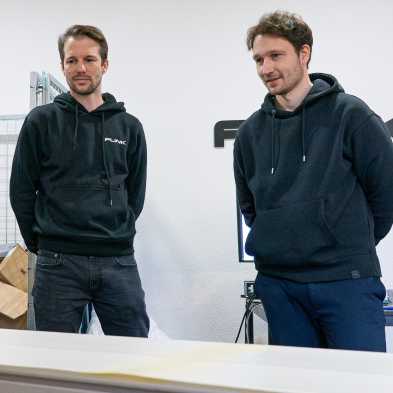
The ETH spin-off Flink Robotics wants to revolutionize the handling of packages. Its founders Moritz Geilinger and Simon Huber have developed software that allows robots to work together and quickly take on new tasks.
Tiny component for record-breaking bandwidth
News

A modulator developed by researchers from ETH Zurich has broken the terahertz mark. The ultrafast component efficiently transmits large volumes of data into the fibre-optic network in a short space of time.
How regulation can keep pace with technological development
News

Of all places, Switzerland – the most innovative country in the world – suffers from a shortage of new digital technologies reaching the market in the healthcare sector. Researchers from ETH Zurich have been investigating how innovations can be developed responsibly and implemented faster.
Precision therapy with microbubbles
News

ETH Zurich researchers have investigated how tiny gas bubbles can deliver drugs into cells in a targeted manner using ultrasound. For the first time, they have visualised how tiny liquid jets generated by microbubbles penetrate the cell membrane enabling the drug uptake.
From ETH to clinical practice: medical research requires cooperation
News
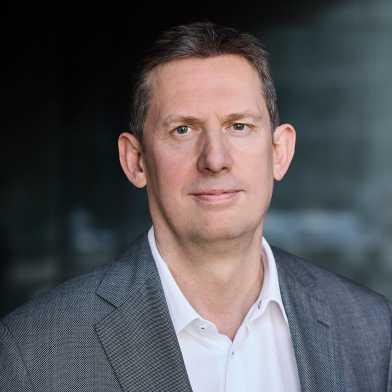
Medical research needs unresolved issues from clinical practice, says ETH Zurich Vice President Christian Wolfrum. He explains in an interview how cooperation between ETH research and hospitals can be improved and why ETH intends to pool its activities in medical research.
Spinning for science
News
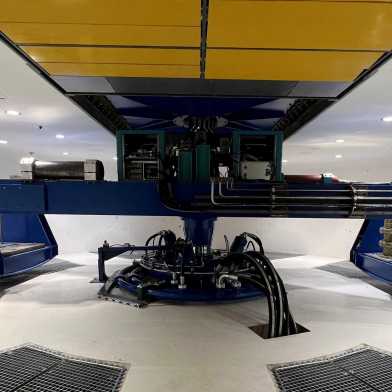
Planning and building Europe’s largest capacity geotechnical centrifuge took seven years. Now, after one and a half years of operation, its official inauguration is finally being celebrated at the Hönggerberg campus. And it’s no coincidence that this is happening in mid-January.
Robots help deliver gifts
News
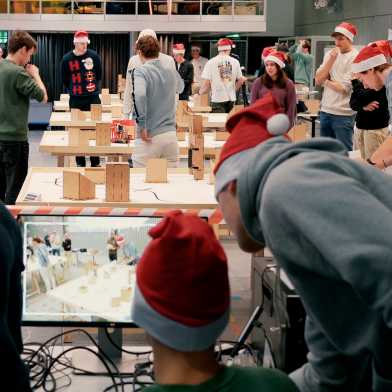
This year’s Innovation Project required ETH students to develop kit-based robots capable of delivering gifts down the chimneys of model-sized houses. The ten best teams will compete against each other in the final on 17 December.
Delivering medicines with microscopic flowers
News
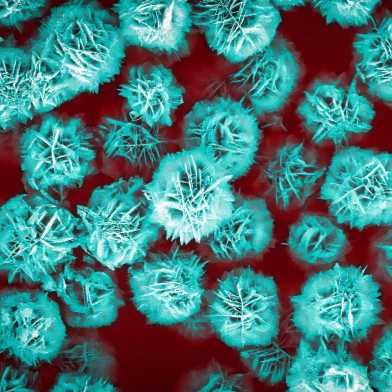
These small particles are reminiscent of paper flowers or desert roses. Physicians can use them to guide medicines to a precise destination within the body. Better yet, the particles can easily be tracked using ultrasound as they scatter sound waves.
Researchers are making jet engines fit for the hydrogen age
News
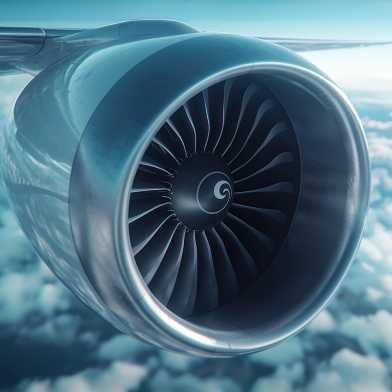
Hydrogen-powered planes are set to take wing around the world in the future. To make this possible, engineers have to develop the jet engines that will power them. Experiments by researchers at ETH Zurich are now providing the necessary basis for making these engines powerful and durable.
Running without limits: When air creates no resistance
- Homehero
- News
- Globe magazine
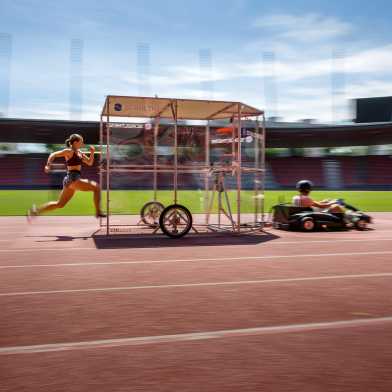
ETH student and top sprinter Géraldine Frey is preparing for her races with an innovative piece of equipment. Developed at ETH Zurich, the Airshield reduces aerodynamic drag, enabling athletes to train at speeds above their normal pace.
Artificial muscles propel a robotic leg to walk and jump
News
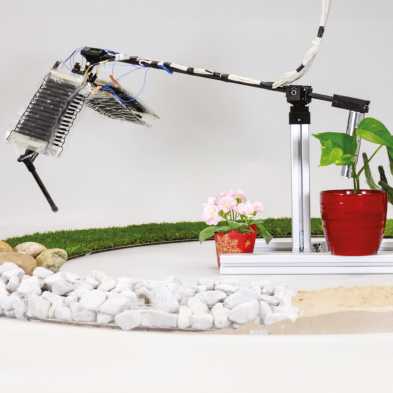
Researchers at ETH Zurich and the Max Planck Institute for Intelligent Systems have developed a robotic leg with artificial muscles. Inspired by living creatures, it jumps across different terrains in an agile and energy-efficient manner.
One-way street for sound waves
News
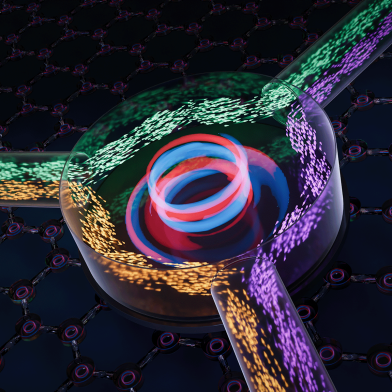
Researchers at ETH Zurich have managed to make sound waves travel only in one direction. In the future, this method could also be used in technical applications with electromagnetic waves.
Chemical plastics recycling is ready to go
News
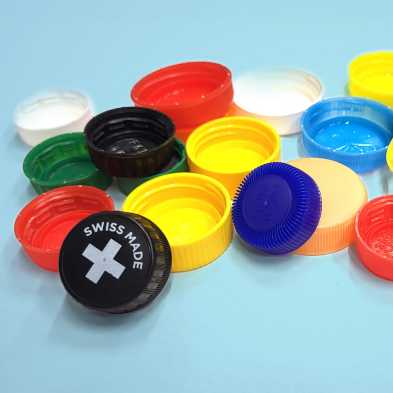
Scientists around the world can now go full throttle in their research into chemical plastics recycling. Researchers at ETH Zurich have laid important foundations for this by showing that it’s all about the stirring.
Running without air resistance
News
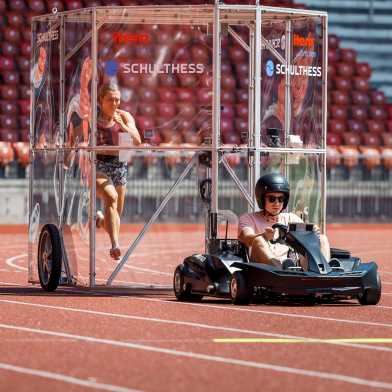
A newly developed airshield supports track and field athletes such as Mujinga Kambundji with overspeed training.
Training for the transport of the future
- News
- Homehero
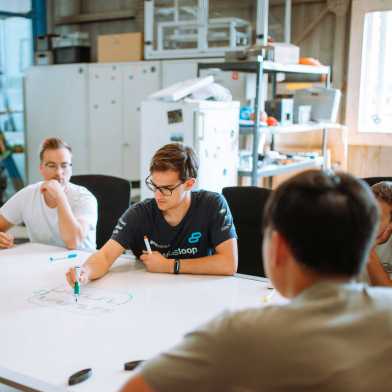
This year’s European Hyperloop Week is being held in Zurich. Student engineering teams will present their prototypes to a jury and compete against each other in different categories. ETH Zurich is represented with the Swissloop project.
Innovative battery design: more energy and less environmental impact
News
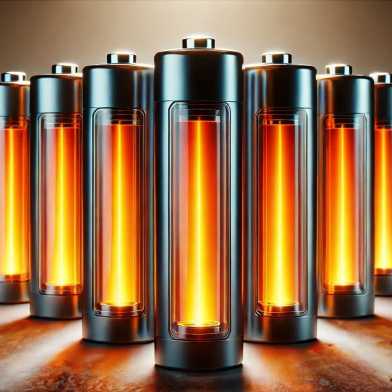
A new electrolyte design for lithium metal batteries could significantly boost the range of electric vehicles. Researchers at ETH Zurich have radically reduced the amount of environmentally harmful fluorine required to stabilise these batteries.
Medical Engineering block course wins prize for innovative teaching
News
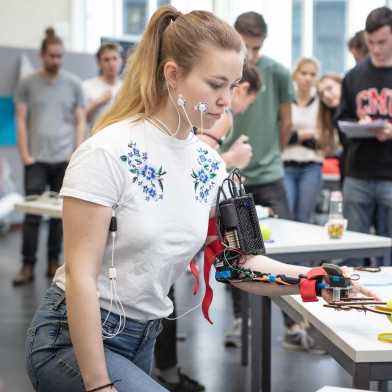
Medical students at ETH Zurich build a gripper hand for elbow exoskeletons in a crash course lasting just one week. This course has now been honoured with the 2024 Kite Award, the ETH prize for particularly innovative teaching.
Blood diagnostics modelled on leeches
News
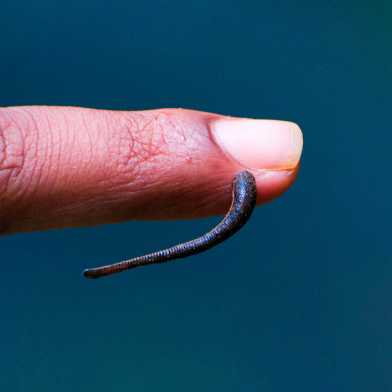
Researchers at ETH Zurich have developed a safe and inexpensive device for reliable blood measurements. It works using a suction cup and could also be employed to diagnose the tropical disease malaria – even by non-medical personnel.
ETH Zurich spin-offs develop high performance batteries
- News
- Homepage
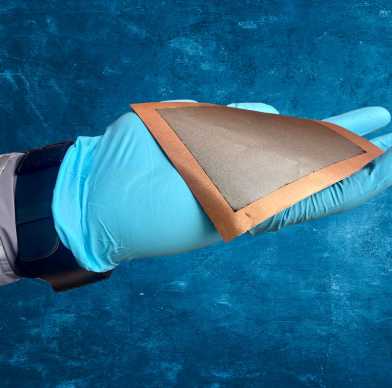
The electrification of many areas of life is leading to an increased demand for high-performance batteries. Two ETH spin-offs are making waves in this field: while BTRY develops high-performance solid-state batteries, 8inks is working on a new standard for production.
Using a hopping robot for asteroid exploration
News
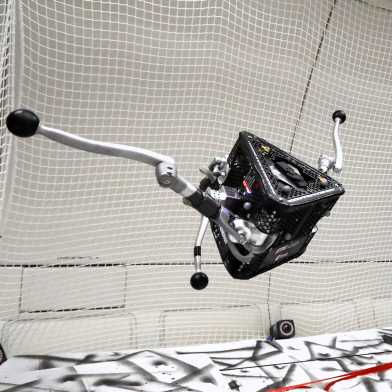
As part of the SpaceHopper project, ETH Zurich students are developing a robot that can navigate very low gravity environments using a jumping-like mode of locomotion.
ANYmal can do parkour and walk across rubble
News
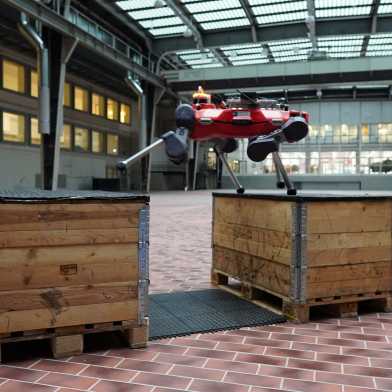
The quadrupedal robot ANYmal went back to school and has learned a lot. ETH Zurich researchers used machine learning to teach it new skills: the robot can now climb over obstacles and successfully negotiate pitfalls.
A new solution for energy transfer to heart pumps
News
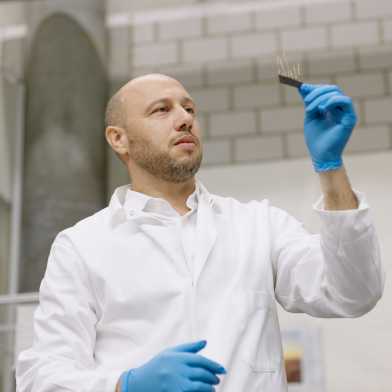
Roughly one in two wearers of ventricular assist devices are diagnosed with an infection. The reason for this is the thick cable for the power supply. ETH Zurich researchers have now developed a solution to mitigate this problem.
A medical degree programme for those who ask why
News
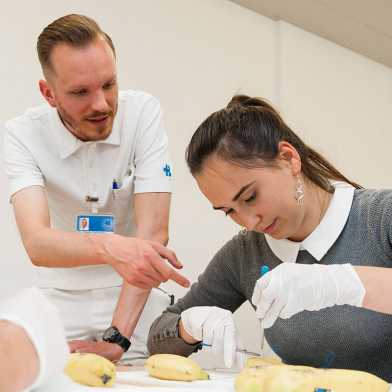
What began as a venture quickly proved its worth: The ETH Bachelor in Human Medicine is well received by graduates and has helped to establish ETH Zurich in the Swiss medical education landscape. In a video, five graduates talk about what makes studying medicine at ETH so special.
Innovative coating prevents limescale formation
News
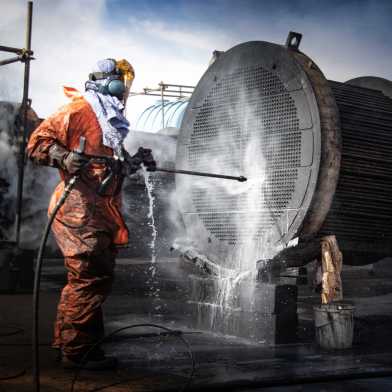
Wherever hot water flows, limescale is never far away. In households, this is a nuisance; in thermal power stations, it’s an expensive problem. Now researchers at ETH Zurich have found an answer.
Midday sun at the touch of a button
News
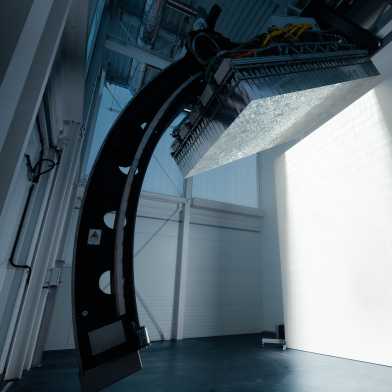
At ETH Zurich, there is a room where the sun shines at the touch of a button; one hour it’s noon in the Sahara, the next it’s January in Berlin. Researchers use it to test newly developed building systems, components and materials.
Sound-powered sensors stand to save millions of batteries
News
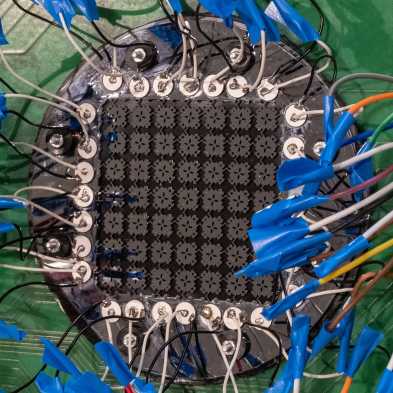
Researchers at ETH Zurich have developed a sensor that utilises energy from sound waves to control electronic devices. This could one day save millions of batteries.
How ETH knowledge and local expertise are helping the reconstruction of Ukraine
Homehero
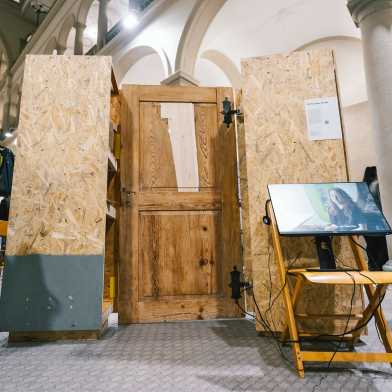
Two years ago, Russia launched its war of aggression against Ukraine. One direct consequence of the conflict is the destruction of buildings and infrastructure. Now an exhibition in the ETH Main Building entitled “ETH with Ukraine” is showing how buildings, facilities and the environment in Ukraine can be protected or restored.
Capturing greenhouse gases with the help of light
News

Researchers at ETH Zurich are developing a new method to remove CO2 from the atmosphere. It involves molecules that become acidic when exposed to light. Their new process requires much less energy than conventional technologies.
A picking robot for the greenhouse
News
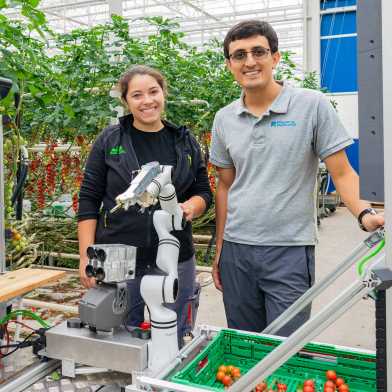
Working in a greenhouse is both strenuous and time-consuming. The picking robot from ETH spin-off Floating Robotics takes on particularly repetitive tasks, thereby alleviating the strain on human pickers. It is currently undergoing testing at Beerstecher AG in Hinwil.
Artificial intelligence for safer bike helmets and better shoe soles
News
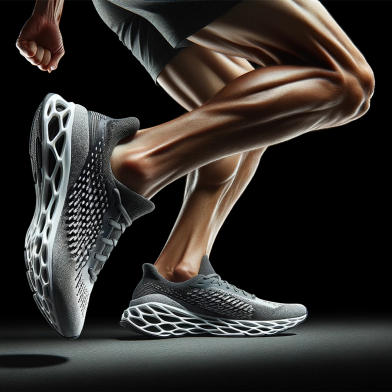
Researchers have trained an artificial intelligence to design the structure of so-called metamaterials with desired mechanical properties for a wide range of applications.
Entrepreneur for women’s health
- Globe magazine
- Homehero

For her doctoral project at ETH Zurich, Sabrina Badir developed a device that determines the risk of premature birth. Today she is the CEO of spin-off Pregnolia, and her certified measuring device is being used in more than 20 clinics and medical practices.
From registered nurse to biomedical engineer
- Globe magazine
- Homehero
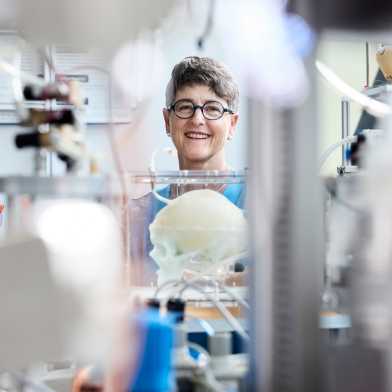
Marianne Schmid Daners was already fascinated by the human-technology interface when she worked as a registered nurse. Since graduating with a degree in mechanical engineering and a doctorate in biomedical engineering, she has been developing biomedical devices for the treatment of heart failure and hydrocephalus.
Replicating the structure of bird feathers
News

Modelled on nature: researchers have developed a new material that replicates the structure responsible for the blue feathers of the North American song bird, among many other birds. It also has other striking advantages.
Autonomous excavator constructs a six-metre-high dry-stone wall
News
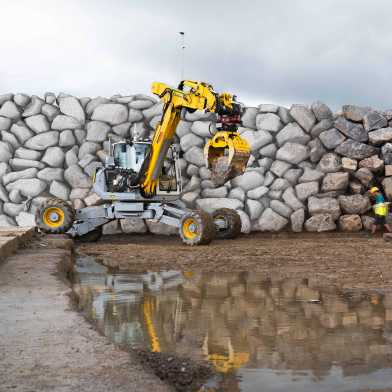
ETH Zurich researchers taught an autonomous excavator to construct dry stone walls itself using boulders weighing several tonnes and demolition debris.
Printed robots with bones, ligaments, and tendons
- Homehero
- News
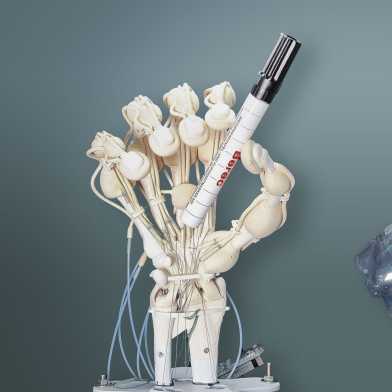
For the first time, researchers have succeeded in printing a robotic hand with bones, ligaments and tendons made of different polymers using a new laser scanning technique.
Masterful knowledge generator and visionary innovator
News
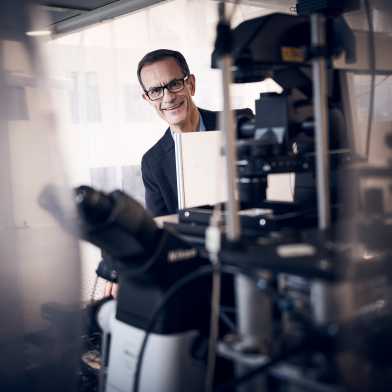
Dimos Poulikakos is retiring in January 2024. The ETH Professor of Thermodynamics has developed many practical applications. His lectures on the fundamentals of thermodynamics have delighted more than 8,000 students; now he passes on a piece of advice for aspiring researchers.
Two projects launched to connect error-corrected qubits
News
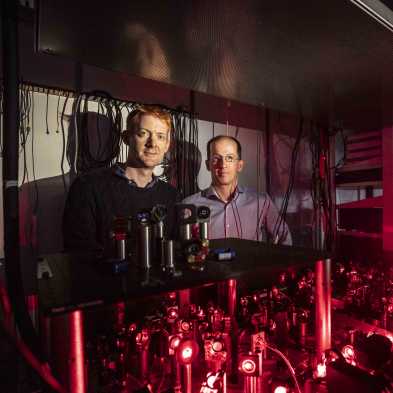
ETH Zurich is participating in two quantum computing projects that are being financed by IARPA, the US research funding agency, with up to 40 million dollars. Both projects aim to connect two error-corrected qubits with one another and thus lay the foundation for future quantum computers.
3D printed reactor core makes solar fuel production more efficient
News
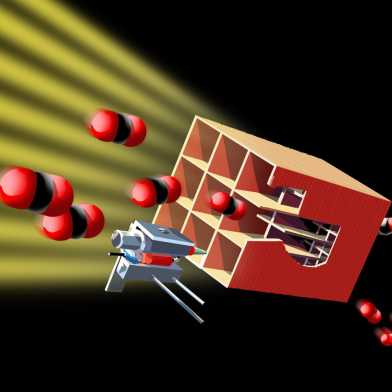
Using a new 3D printing technique, researchers at ETH Zurich have developed special ceramic structures for a solar reactor. Initial experimental testing show that these structures can boost the production yield of solar fuels.
Through the Australian outback in a self-built solar car
News
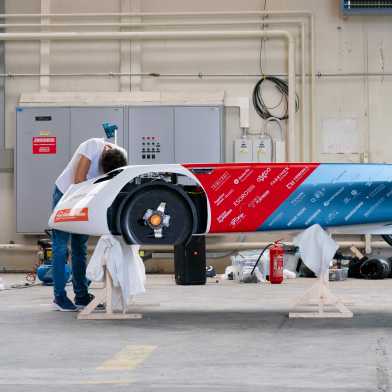
For the first time, a team of students from ETH Zurich is taking part in the renowned World Solar Challenge. Will they be able to keep up with the world’s best?
Valuable raw materials from olive waste
News

ETH spin-off Gaia Tech transforms waste from olive oil production into high-quality antioxidants for use in cosmetics or food. This turns waste into valuable raw materials.
Collecting clean water from fog
News
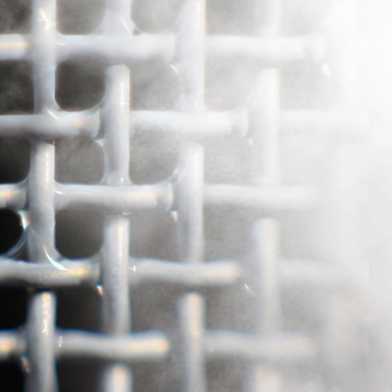
Researchers at ETH Zurich have demonstrated the use of a specially coated metal mesh to harvest water from fog and simultaneously remove pollutants. People living in dry but foggy areas should benefit from this technology.
Detecting breast cancer earlier with 3D X-rays
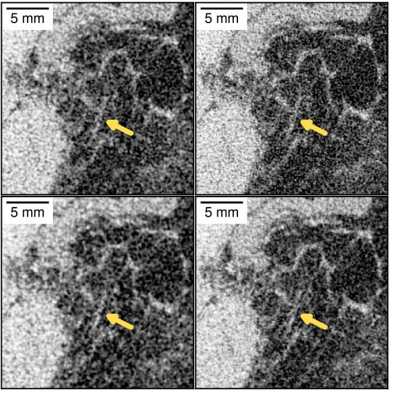
A research team from ETH Zurich and the Paul Scherrer Institute PSI together with the Baden Cantonal Hospital and the University Hospital Zurich wants to improve a method for diagnosing breast cancer.
Robot team on lunar exploration tour
News
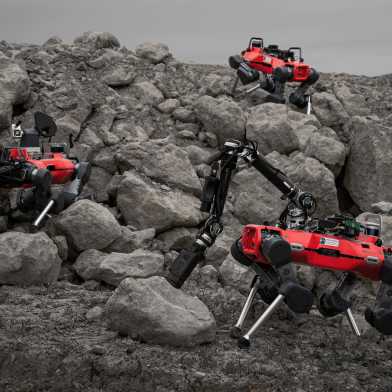
Swiss engineers are training legged robots for future lunar missions that will search for minerals and raw materials. To ensure that the robots can continue to work even if one of them malfunctions, the researchers are teaching them teamwork.
Rethinking wastewater management
- Globe magazine
- News
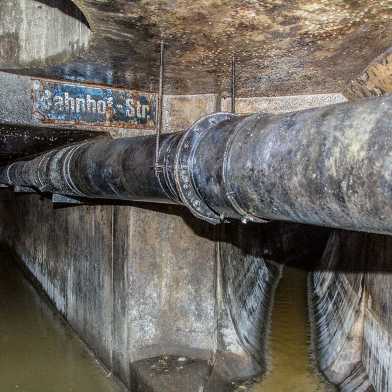
Sewer systems and centralised treatment plants are not a sustainable solution for managing the world’s wastewater. Environmental engineers at ETH Zurich and Eawag have been helping to develop decentralised, closed-loop modular systems.
Innovative flow batteries
- Globe magazine
- Homehero
- News
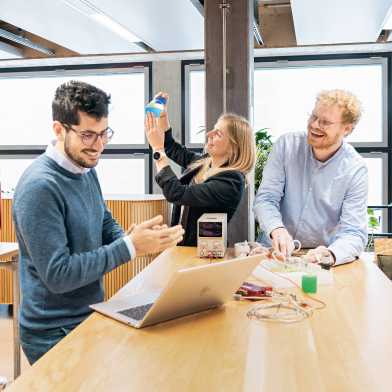
The start-up Unbound Potential has developed a new battery technology for long-duration energy storage – and received a grant of one million euros for it.
Diving robot for dangerous operations
News
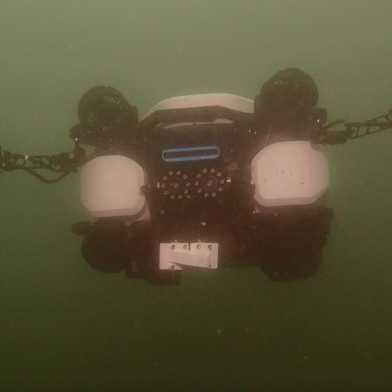
Divers are often put at considerable risk when searching for people or objects underwater. The ETH spin-off Tethys has developed an underwater robot that can be used in situations that are too dangerous for human divers.
From robotic fish to artificial muscles
News
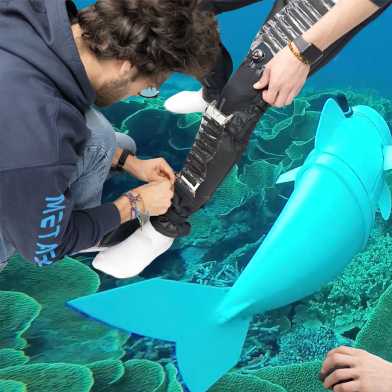
Bachelor’s students at ETH Zurich were given a year to turn their original ideas into finished products. ETH News presents videos of two of these projects.
Progress in alternative battery technology
- News
- Homepage
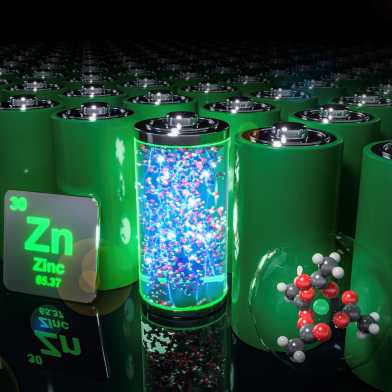
It is not easy to make batteries cheap, efficient, durable, safe and environmentally friendly at the same time. Researchers at ETH Zurich have now succeeded in uniting all of these characteristics in zinc metal batteries.
How to make self-folding surgical tools
News
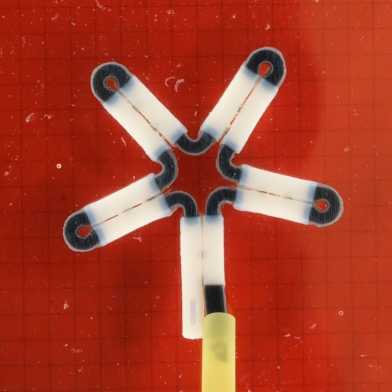
For minimally invasive surgery, the instruments used must be small. ETH Zurich researchers have now developed a method to transport large devices through a narrow catheter. This expands the possibilities for designing minimally invasive surgical tools.
This robot is a security guard
- News
- Homepage
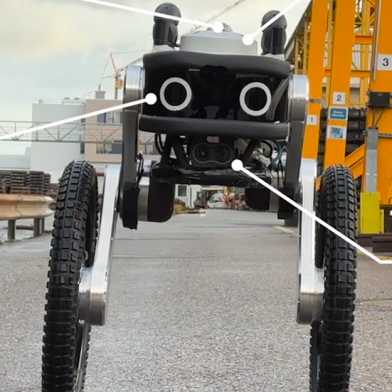
Robots that can perform guarding tasks and overcome obstacles have already been seen in films such as the Pixar animation "Wall-E ". This film is set 800 years in the future. But similar robots are now becoming reality.
Shape memory for nano-sized objects
- News
- Homepage
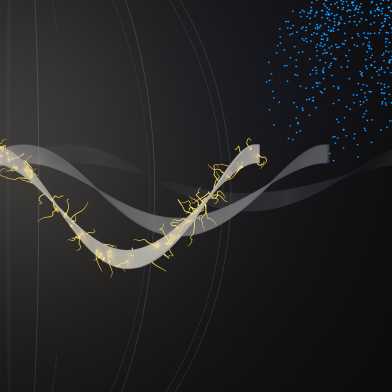
Researchers at ETH Zurich achieved a shape memory effect for the first time with objects that are only a few nanometers in size. This can be used to manufacture tiny machinery and robotic devices on the nanoscale.
A wholly sustainable plastics economy is feasible
- News
- Homepage
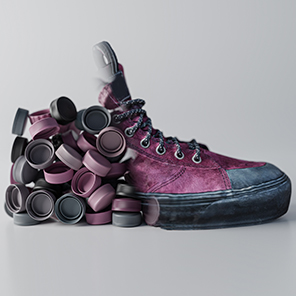
A new study shows what it will take for the plastics industry to become completely sustainable: lots of recycling combined with the use of CO2 from the air and biomass. It is also the image of plastics that need to change.
A precision arm for miniature robots
News

Until now, microscopic robotic systems have had to make do without arms. Now researchers at ETH Zurich have developed an ultrasonically actuated glass needle that can be attached to a robotic arm. This lets them pump and mix minuscule amounts of liquid and trap particles.
Gold-based passive heating for eyewear
News
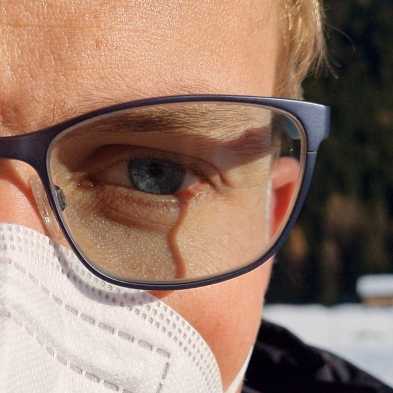
Researchers from ETH Zurich have developed a new transparent gold nanocoating that harnesses sunlight to heat the lenses of glasses, thereby preventing them from fogging in humid conditions. This coating could potentially also be applied to car windshields.
Stable in all kinds of shapes
News
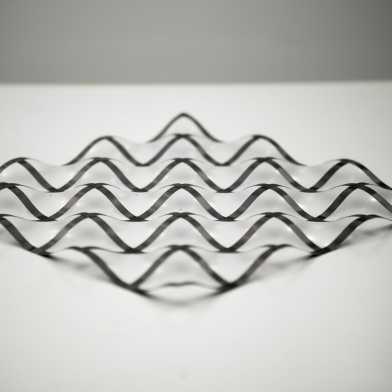
ETH Zurich researchers have developed a structure that can switch between stable shapes as needed while being remarkably simple to produce. The key lies in a clever combination of base materials.
ETH Zurich researchers want to make salt printing marketable
News
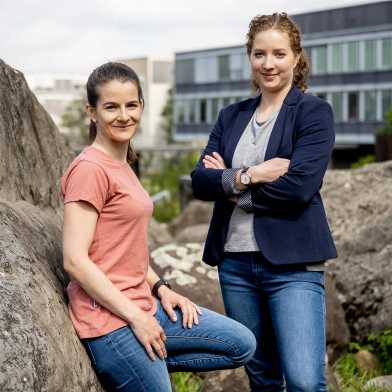
Materials scientists Nicole Kleger and Simona Fehlmann have developed a 3D printing process for creating salt templates that they can fill with other materials. One area of application is the creation of highly porous lightweight metal components. The two Pioneer Fellows are now trying to transfer this process to industry.
The e-Sling electric aircraft takes off
News
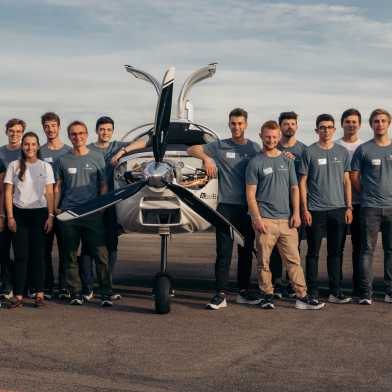
The four-seater electric aircraft “e-Sling”, which was developed by ETH students, has taken flight for the first time. The student project has taken two years and a lot of dedication.
Strong adhesion thanks to cavitation bubbles
News
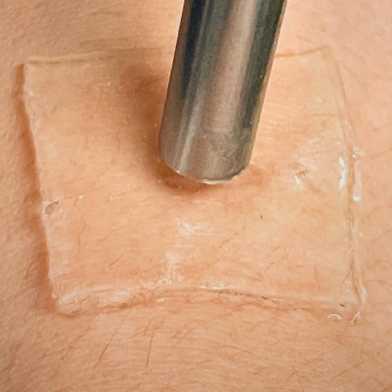
Canadian researchers have discovered that they can stick hydrogel plasters to the skin very effectively using ultrasound. ETH Zurich professor Outi Supponen has now explained the underlying mechanism: imploding bubbles that form within the adhesive located between the plaster and the skin anchor the one on the other.
ETH researchers remeasure gravitational constant
News
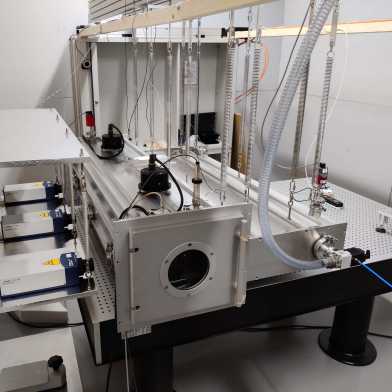
Researchers at ETH Zurich have redetermined the gravitational constant G using a new measurement technique. Although there is still a large degree of uncertainty regarding this value, the new method offers great potential for testing one of the most fundamental laws of nature.
Getting into the air
- News
- Globe magazine
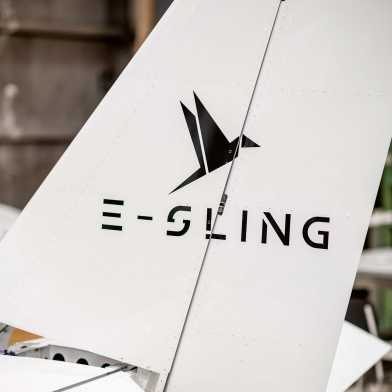
Eight ETH students are working on battery and hydrogen versions of an electric aircraft as part of the e-Sling focus project. For the past year, their lives have revolved around Hangar 3 at the Innovation Park Zurich in Dübendorf.
An entrepreneur through and through
- News
- Globe magazine
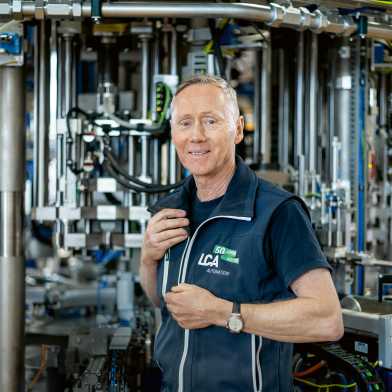
ETH alumnus Christoph Rennhard runs a company that develops precision machines for the global market. The keys to his success are technical expertise, customer orientation and talented staff – plus the ability of his SME to respond faster than big corporations.
Sustainable solutions from a concrete canoe
News
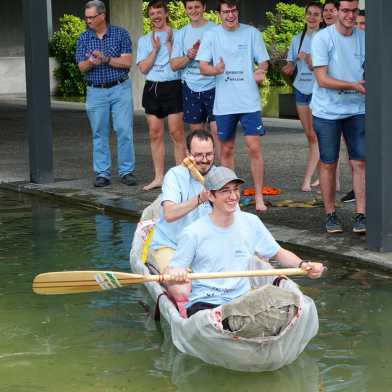
This weekend, students from ETH Zurich won the sustainability prize at the 18th concrete canoe regatta in Brandenburg with their boat "TruchETH". The aspiring civil engineers impressed with an environmentally friendly boat for which they combined old clothes with concrete.
Inspiring future engineers
News
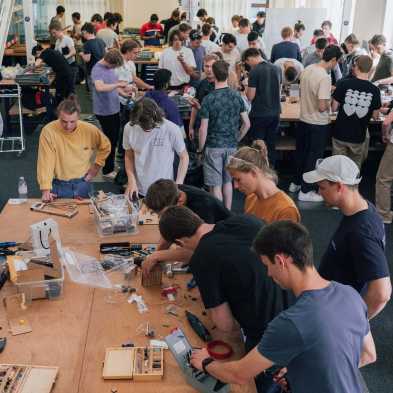
In this year’s innovation projects, ETH students had to develop an engineering kit that can be used to spark adolescents' interest in engineering.
Robot dog on the way to the moon
News
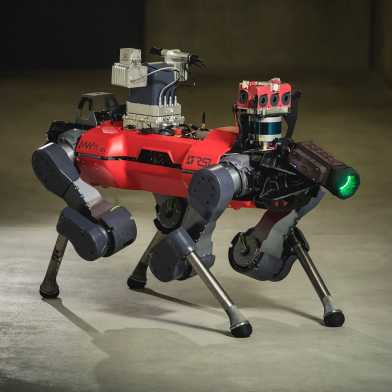
The robotic explorer GLIMPSE, created at ETH Zurich and the University of Zurich, has made it into the final round of a competition for prospecting resources in space. The long-term goal is for the robot to explore the south polar region of the moon.
A wooden dome made solely from waste
Globe magazine
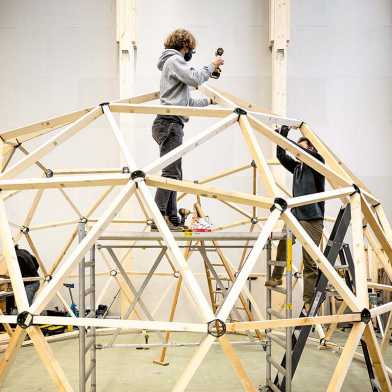
Catherine De Wolf firmly believes that digitalisation can help shift the construction industry towards a more circular economy. The assistant professor and her research group recently completed a hands-on project to illustrate how this could work.
How micromobility affects the climate
News
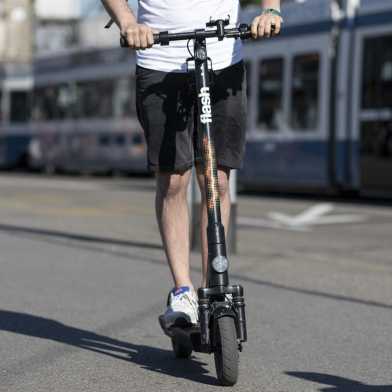
Shared e-scooters and e-bikes transport the image of a climate-friendly mobility solution. ETH researchers have now shown that shared micromobility solutions in Zurich emit more CO2 emissions than the alternatives they replace.
Swaying mountains
News
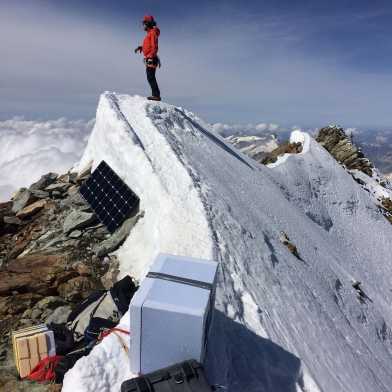
Like bridges and tall buildings, large mountains are constantly vibrating, excited by seismic energy form the Earth. An international team of researchers has now been able to measure the resonant swaying of the Matterhorn and make its motion visible using computer simulations.
“We need a smart innovation policy”
News
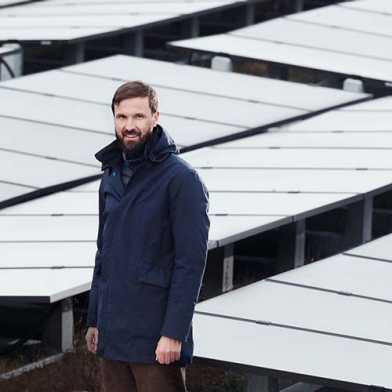
How can we decarbonise our economy by 2050? ETH Zurich Professor Tobias Schmidt argues that the answer lies in a radical technological transformation. He describes his journey from engineer to policy researcher – and his determination to build bridges between science and policy.
Examining the skin with a vacuum
News
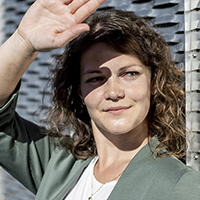
Biomechanical engineer Bettina Müller has developed a device that can improve examinations of how scars heal. She hopes her device will help doctors to diagnose skin diseases. “Nimble” is set to go to market within two years.
Technical feasibility of sustainable fuels production demonstrated
News
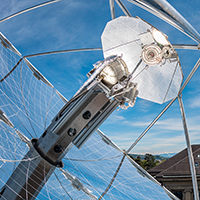
Researchers at ETH Zurich have developed the process technology that can produce carbon-neutral transportation fuels from sunlight and air. Now, in a Nature publication, they demonstrate the stable and reliable operation of the solar mini-refinery under real on-sun conditions. And they show a way to introduce solar fuels to the market without additional carbon taxes.
Much more than just chocolate
News
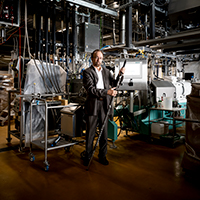
He might have been known to the general public as the “Chocolate Professor”, but the newly retired ETH professor Erich Windhab was interested in much more than just indulgence. He also dedicated himself to issues of global food security and sustainability.
Batteries for transporting mobility into the future
News
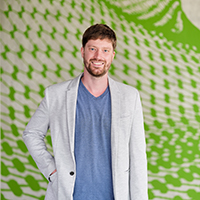
High-performance batteries are key to the comprehensive roll-out of e-mobility. ETH Pioneer Fellow Paul Baade is looking into how to manufacture them more cost-effectively.
Water resources: defusing conflict, promoting cooperation
News
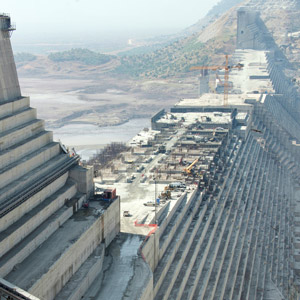
The EU funded project DAFNE has developed a methodology for avoiding conflicts of use in transboundary rivers. The model-based procedure allows for participatory planning and cooperative management of water resources. The aim is now for the DAFNE methodology to be implemented in other regions of the world.
ETH students develop new solutions for the future
News
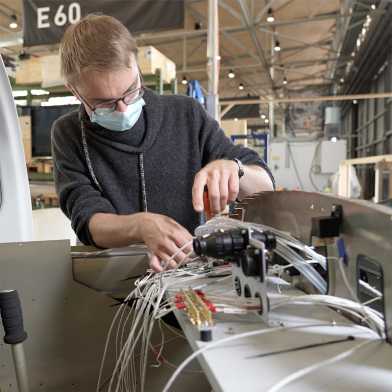
As part of the focus projects, mechanical and electrical engineering students have developed solutions for the challenges of the future. In teams, they spent two semesters developing new technical approaches for their respective projects. The “IGNIS” and “e-Sling” teams presented here are just two of this year’s many notable focus projects.
Testing on the Limmat to combat plastic in the oceans
News
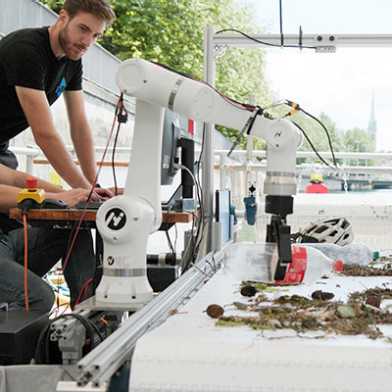
This summer, students from ETH Zurich will test various technologies on the Limmat for the automatic removal of waste. The Autonomous River Cleanup project is starting with rivers to tackle the global problem of marine pollution.
Harvesting drinking water from humidity around the clock
News
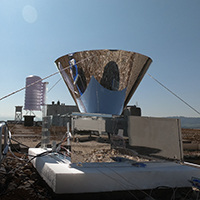
Researchers at ETH Zurich have developed a condenser for countries where water is in short supply. Theirs is the first zero-energy solution for harvesting water from the atmosphere throughout the 24-hour daily cycle. It relies on a self-cooling surface and a special radiation shield.
Swimming upstream on sound waves
News
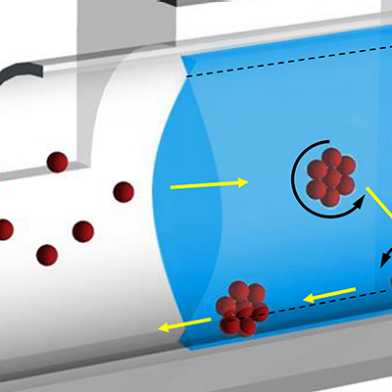
ETH researchers are among the first scientists to have succeeded in propelling microvehicles against a fluid flow using ultrasound. In future, these tiny vehicles are set to be introduced into the human bloodstream, thereby revolutionising the field of medicine.
Putting climate-positive business ideas into practice
Globe magazine
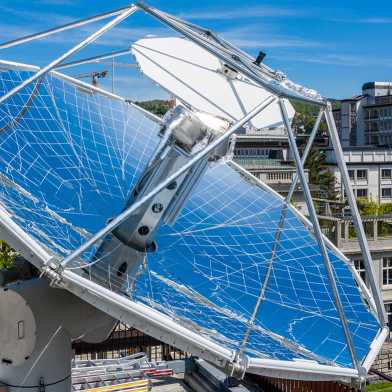
More and more ETH Zurich researchers are taking the plunge into entrepreneurship. By launching spin-offs, they hope to turn their lab findings into solutions that can help stem the rise in atmospheric carbon dioxide.
The sky’s the limit for engineers
Globe magazine
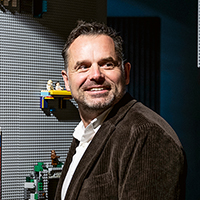
Changing the world with the power of ideas – that’s what Martin Bosshardt finds so fascinating about being an engineer. And no matter which industry he works in, he always draws on what he learnt at ETH.
Augmented reality in surgery
News
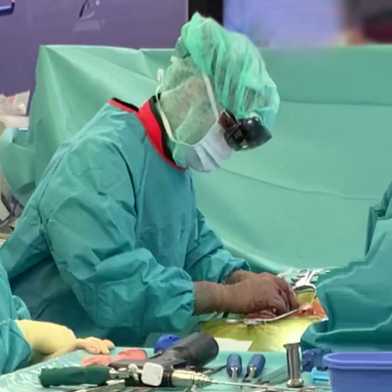
A team at Balgrist University Hospital successfully completed the first holographically navigated spine surgery. The technology was developed at Balgrist University Hospital as part of a project involving ETH Zurich researchers.
Engineering at the service of humanitarian aid
Press release

The Engineering Humanitarian Aid initiative, officially launched on 10 December 2020, will harness the expertise of Switzerland's two federal institutes of technology to benefit humanitarian aid programs. The effort will focus on the areas of energy and the environment, data sciences and digital technologies, and personalized health and related technologies.
Magnetic bacteria as micropumps
News
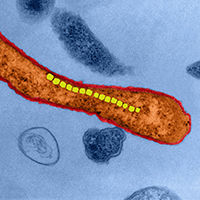
ETH scientists use magnetic bacteria to control liquids at the micro level. They are already thinking about using them in the human bloodstream for precision delivery of cancer drugs to a tumour.
Technical know-how meets humanitarian aid
News
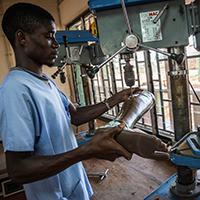
Engineers from the ETH Feasibility Lab are working together with the ICRC to develop a prosthetic leg that allows easy replacement of its wearing part. This prolongs the service life of the prosthesis. In the future, more mine victims could be fitted with a such.
Miniscule robots of metal and plastic
News
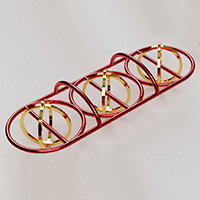
Researchers at ETH Zurich have developed a technique for manufacturing micrometre-long machines by interlocking multiple materials in a complex way. Such microrobots will one day revolutionise the field of medicine.
Cells on the run
News
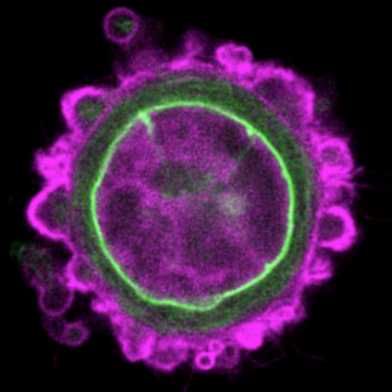
Many cells in the body must pass through tissue, which sometimes requires them to get out of tight corners. An international research team co-led by ETH Zurich has now examined how cells recognise and escape from such bottlenecks. Among the results of the team’s work are new pointers for how to improve immunotherapy.
Recording thousands of nerve cell impulses at high resolution
News
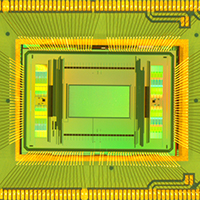
ETH researchers have developed a new generation of microelectrode-array chips for measuring nerve impulses, enabling studies of how thousands of nerve cells interact with each other.
Putting the users centre stage
Zukunftsblog
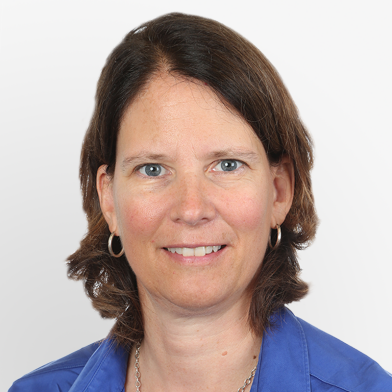
Even if we succeed in combatting the COVID crisis, the challenges for the health system will not simply disappear. Digital technologies can be developed to help meet ongoing challenges; Nicole Wenderoth explains what should be borne in mind here.
ETH Zurich’s last tribologist?
News
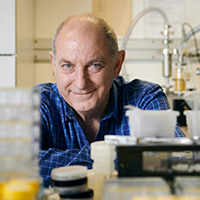
The materials scientist, chemist and world-renowned tribologist Nicholas Spencer will be retiring soon. His departure could signal the loss of a specialist discipline within ETH Zurich.
Predicting the unknown
News
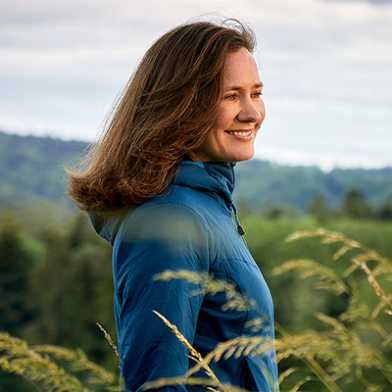
Olga Fink develops artificial intelligence algorithms for industrial assets, rolling stock and power plants. The 37-year-old researcher's goal is to predict rare events before they even occur. By doing so, she improves the reliability and service life of complex industrial assets.
How Venus Flytraps also Snap
News
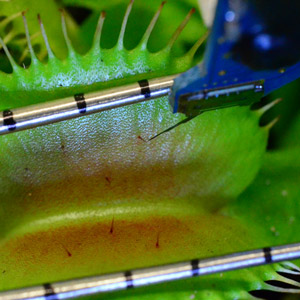
Venus flytraps are known for the fact that their catching leaves close in a flash when unsuspecting prey touch highly sensitive trigger hairs twice in a row. A team of researchers from ETH Zurich and the University of Zurich has now discovered a new snap mechanism.
A completely new plasmonic chip for ultrafast data transmission using light
News
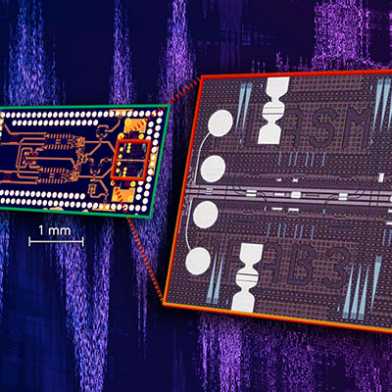
ETH researchers have built an ultrafast chip that can speed up data transmission in fibre optic networks. The chip combines several innovations at the same time and, given the growing demand for streaming and online services, represents a significant development.
"breathe" ventilator from ETH wins federal funding
News
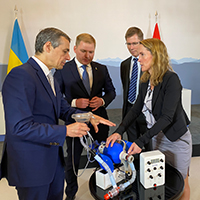
ETH scientists have responded to the coronavirus pandemic by developing a low-cost ventilator that should help to alleviate the shortage of such equipment in emerging and developing countries. The Federal Department of Foreign Affairs (FDFA) is now offering start-up financing for the project enabling production to commence in Ukraine.
A new theory for Semiconductors made of nanocrystals
News
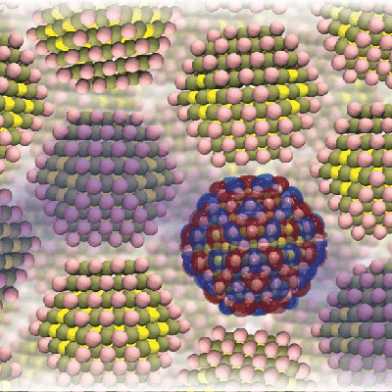
Researchers at ETH have provided the first theoretical explanation for how electrical current is conducted in semiconductors made of nanocrystals. In the future, this could lead to the development of new sensors, lasers or LEDs for TV screens.
Wavy surfaces for better light control
News
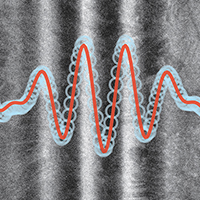
Researchers at ETH Zurich have developed a method for the production of wavy surfaces with nanometre precision. In the future this method could be used, for instance, to make optical components for data transmission on the internet even more efficient and compact.
ETH researchers deconstruct tissue repair
News
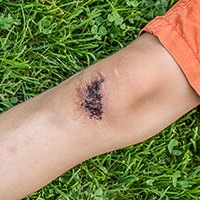
ETH researchers have deconstructed the mechanisms that control wound healing and scar formation in more detail. To this end, biologists and engineers have developed a new method that allows the biomechanical properties of the healing tissue to be measured in vivo for the first time.
Roland Siegwart on the topic of robotics
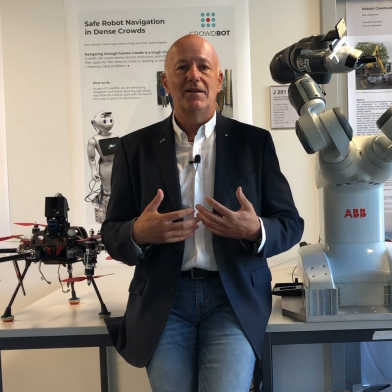
In the video series "Ask the Expert", experts from ETH Zurich answer questions from the community. In this episode Roland Siegwart talks about robotics.
Using electrical stimulus to regulate genes
- News
- Category
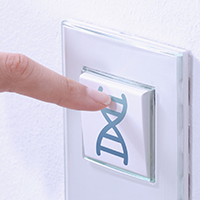
A team of researchers led by ETH professor Martin Fussenegger has succeeded in using an electric current to directly control gene expression for the first time. Their work provides the basis for medical implants that can be switched on and off using electronic devices outside the body.
Estimating the second wave
News
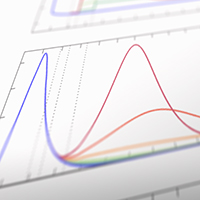
ETH researchers are using a new mathematical model to calculate a possible second wave of the pandemic in Switzerland. Even though such a wave would probably grow more slowly than the first without overloading hospitals, its death toll may turn out to be significantly higher.
Basel research centre supports ETH coronavirus research

The Basel Botnar Research Centre for Child Health is funding five research projects at ETH Zurich dedicated to the diagnosis and treatment of COVID-19, the disease caused by the coronavirus.
Testing ventilator systems
News
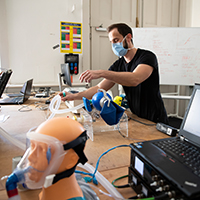
ETH researchers have set up a test rig to put newly developed ventilator systems through their paces.